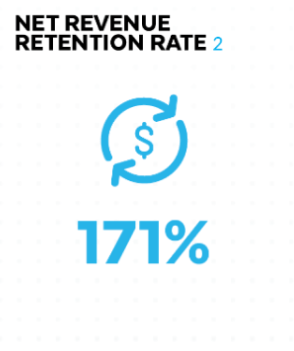
Davidovici/iStock via Getty Images
Investment Thesis
Snowflake (NYSE:SNOW) is one of the few tech stocks that has strongly bounced from its summer lows. Yes, the stock has come down significantly from its all-time highs, but it has managed to hold up a lot better than the majority of tech stocks.
Accordingly, on the one hand, its multiple has already compressed. While on the other hand, still today Snowflake is very expensive. Particularly when we consider its off-balance sheet “debt“, in the form of stock-based compensation.
In sum, I struggle to get bullish on this name.
So, What’s Happening in Tech?
For most investors, it’s preposterous to consider that the next bull market could start somewhere outside of tech. We’ve all been indoctrinated to look for echoes of this market in other bear markets. And that tech will lead the bull by the horns.
But is there a scenario, as improbable as it seems to be today, that tech doesn’t lead the next rally?
The problem with this market is that there are just too many institutions and investors that have tied themselves up to this one sector of the market.
In essence, there’s too much capital running after too few ideas. And that’s causing problems. Not only have these stocks become overcrowded, but any time that tech stocks stop selling off, investors are so quick to clamber back into tech stock and buy the dip.
Does Snowflake Have Too Much Debt?
I read a comment on SA about Snowflake selling off because it had too much debt. And this got me thinking. On the surface, of course, Snowflake is debt free. In fact, it’s swimming in approximately $4 billion of cash and equivalents.
But when we dig further and consider that fiscal Q2 2023 saw approximately $230 million of stock-based compensation go out the door this made me reconsider the above question.
Before going further, note that this figure adds to Snowflake’s stock-based compensation the taxes paid on the stock-based compensation while subtracting the approximately $9 million infusion from the exercise of the stock options.
Put another way, out of the $497 million in revenues that Snowflake reported in fiscal Q2 2023, 46% goes out the door in the form of stock-based compensation.
So it appears to be the case that the bulk of Snowflake’s revenues, nearly half, goes to retaining executive talent. So, for shareholders in Snowflake, this sum isn’t being kept in the business to grow intrinsic value.
Is There Enough Future Growth?
Snowflake is a database company. Customers use its platform, on-demand, to break down data silos and perform analytics on the platform at a massive scale.
The problem with a consumption-based data model is that when the economy is strong, customers exceed their initial prearranged capacity commitment amounts. But once things cool down, customers look for ways to cut back on spending, and all variable spending becomes due for reconsideration.
To illustrate my point, even though fiscal Q2 2023 saw revenues increase by 83% y/y, deferred revenues were down from $70 million in the prior year to $13 million in the most recent quarter.
This could just be one quarter, with lackluster deferred revenues, or it could be that customers are starting to push back and question whether the running of data analytics that currently goes through Snowflake, some portions of it could be run elsewhere?
SNOW Stock Valuation — Very Expensive
The average business in the S&P 500 (SPY) gets priced at approximately 20x EPS, depending on interest rates. Of course, slower-growing businesses get a lower multiple and faster-growing businesses get a higher multiple.
How much higher should the multiple be for faster-growing businesses? That’s where assumptions enter the discussion. It’s all about the conviction that investors have in the business’s ability to continue growing at above-average rates.
Presently, analysts are expecting Snowflake is able to continue growing at above 50% CAGR in fiscal 2024 (ends January 2024), before dropping to below 50% in fiscal 2025 (ends January 2025).
Thus, investors are paying approximately 180x fiscal 2025 non-GAAP EPS figures. Even if we assume that Snowflake is one of those rare breed companies Michael Mauboussin asserts the possibility of a 5-year growth rate of above 45% at 1% (page 22), even in that case, Snowflake is seriously richly valued.
The Bottom Line
I know that for many investors I’m over-intellectualizing what is inherently simple, that Snowflake’s data management is unlike other businesses.

SNOW fiscal Q2 2023
That the more enterprises use Snowflake’s warehouse of data, the more valuable the data becomes, thus the stickier the platform becomes. It’s a virtuous circle that will keep customers flocking back to its platform, and that’s why Snowflake has net revenue retention rates far, far above even the best-of-the-breed infrastructure-as-a-service platforms.
Indeed, there’s really a lot to like about its future prospects, my only question that I keep circling back to is, will shareholders be able to benefit from this investment at this valuation? And I’m not confident that’s the case.


Be the first to comment